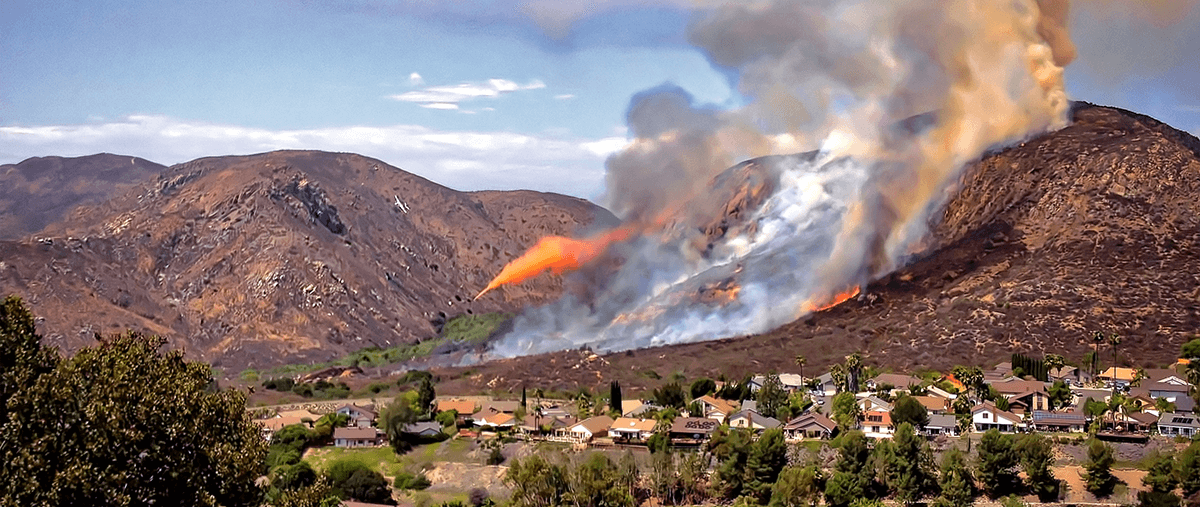In thousands of communities throughout California and widespread areas of the nation, wildfires pose a serious risk to life and property. The danger is especially acute at the wildland urban interface (WUI) – where vegetative fuels and the built environment meet. As large cities and small towns grew, there was a lot of new construction in areas bordering wildlands. Tens of thousands of homes, school buildings, public facilities and businesses have been consumed by wildfire in just the last decade.
Pre-fire risk reduction can help communities adapt to wildfire. Fire adaptation involves communities taking positive actions to mitigate wildfire risk without harm and without extensive wildfire suppression efforts. No single agency, school district, commercial or community association can achieve fire adaptation on their own – to be successful, it needs to truly be a cooperative effort of all community stakeholders.
Community fire adaptation requires multiple tools and strategies, along with everyone who lives and works in the community taking responsibility to reduce wildfire risk. Creating a plan that works in your area is not a one-time thing. You have to update and maintain the plan over time. A community wildfire protection plan (CWPP) identifies where wildfire risk exists, outlines ways to reduce or mitigate that risk, and helps do the risk reduction work to protect individual homes, schools, municipal and business facilities.
"Community fire adaptation needs a cooperative effort of all stakeholders."
In simple terms, the steps in creating a CWPP are as follows:
Step 1: Stakeholders come together and define the community being assessed
Step 2: Complete an assessment of the risks and capabilities existing in your community in the following areas:
- Wildfire hazard and response capability,
- Community values at risk,
- Residential and commercial properties at risk,
- Community plans and regulations,
- Wildfire mitigation/risk reduction programs,
- Resources and funding,
- Public outreach and input, and
- Landowners and other stakeholders.
Step 3: Prioritize community fire adaptation needs
Step 4: Create a Community Fire Adaptation Action Plan
You can find more detailed guidance on conducting a wildfire risk assessment at the Fire Adapted Communities Learning Network web site, a joint effort of The Nature Conservancy, the US Forest Service and Department of Interior. The US Department of Agriculture and Forest Service also developed Best Management Practices for Creating a Community Wildfire Protection Plan as a guide for communities.


